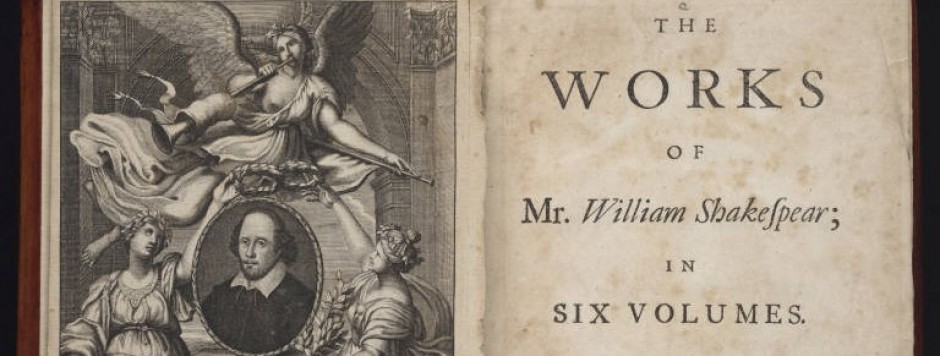This blog will introduce the 1725 edition of The Works of Shakespear in Six Volumes (original spelling maintained) which was collated and edited by Alexander Pope, a renowned writer of the 18th century. The volumes were printed for Jacob Tonson, a bookseller and publisher who obtained the copyright for the plays of William Shakespeare (“Jacob Tonson”). Pope’s work collating and editing Shakespeare’s plays were not without a severe amount of controversy. As Shakespearean scholar David Kastan writes in “From Playhouse to Printing House” from his book Shakespeare and the Book, “Shakespeare […] never asserted any such proprietary right over his scripts or expressed an anxiety about their printed form. His plays, of course, were subjected to theatrical necessities, revised by various hands to allow them to play successfully within the two hours traffic of his stage” (358). Due to the changes the plays would go through because of their nature as scripts, Shakespeare never felt “obliged to ‘furnish’ the play he wrote in it ‘natiue habit'” (358). Therefore, collating and editing Shakespeare’s plays was very much a work of interpretation, since editors of Shakespeare, such as Alexander Pope and Samuel Johnson, had to compare various early editions of Shakespeare’s plays in the attempt to create one accurate final version. In my blog, I will discuss the reliability of Pope’s methods of editing, paying particular attention to his use of footnotes and other book features such as indexes and tables. My goal in introducing these volumes is to reveal how texts are constantly undergoing processes of transition and interpretation; even something as famous and significant in literary canon as Shakespeare’s plays underwent an extensive editorial process to discover the author’s true intentions.
-
Recent Posts
Recent Comments
Archives
Categories
Meta
-
Recent Posts
Recent Comments
Archives
Categories
Meta
